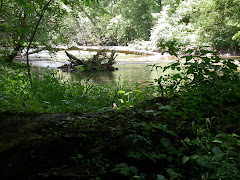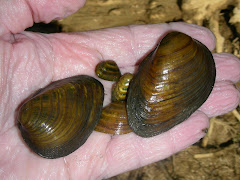
Back in the early 90's, I came back to Columbus after graduating from Penn State. The change in scenery from the green hills of central Pennsylvania to the corn fields and strip malls of central Ohio coulnd not have been more stark. Although I loved Columbus--it was home, after all, to nearly every one of my friends--I was feeling depressed about the landscape I had returned to.
About this time I heard that the Nature Conservancy had christened a stream in Franklin County one of the Western Hemisphere's "Last Great Places," along with other places like the Everglades and South American rain forests. This announcement seemed about as unlikely as finding an ancient city or a dinosaur skeleton in my backyard. How could there be one of the hemisphere's greatest natural features hiding in dingy old central Ohio?
The natural feature was of course Big Darby Creek, and my interest (soon to be passion) was irrevocably hooked. In future posts I'll begin to uncover exactly what the Nature Conservancy knew when it singled out Darby.

Here's a taste of what's to come: this photo at the right is of one of the rarest animals in the world, the clubshell mussel. Once common, this animal now is limited in range to a few select streams throughout the central U.S. Pollution and loss of habitat have led to its demise almost everywhere. But it still thrives in the clean waters of the Big Darby watershed.
The clubshell is but one of many strange and exotic lifeforms that can still be found in the Darby Valley. Like an Ark, Darby serves as a sanctuary for these creatures. When I found out about it, it was a foregone conclusion that I was going to spend much of my time learning about this mysterious place.


